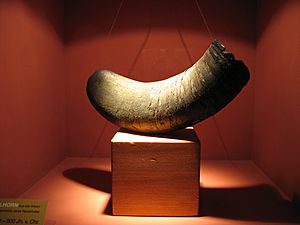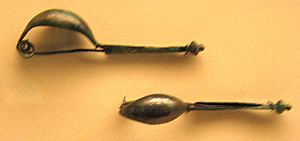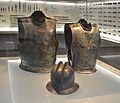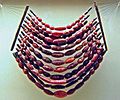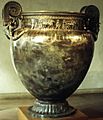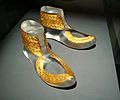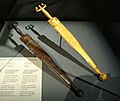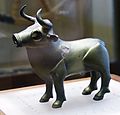Hallstatt culture facts for kids
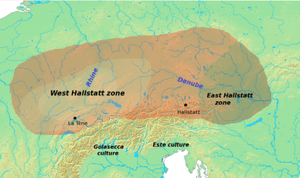
The Hallstatt culture is named after Hallstatt, a city in Austria in which the first artifacts were found. It lasted from about 1200 BC to about 275 BC.
There were different periods that are now told apart mainly by the kinds of brooches used. The brooches changed rather rapidly and permit a good estimate. Hallstatt culture sites have been found in the east of France, in Switzerland, in the south of Germany, in Austria, in Slovenia and Croatia, northwestern Hungary, southwestern Slovakia and southern Moravia.
In this time, the social structure developed into a hierarchy. That can be documented by various things that were added to graves, such as at Magdalenenberg. In the Bronze Age, people lived in big settlements. As iron became available, trade routes changed. A new upper class could establish itself. Unlike before, the upper class liked to live in big houses in the countryside to show their power.
Funerary cults also changed, from cremation burials, to burials with sarcophagi. The new upper class used its wealth for import goods, mostly from the Mediterranean. People started settling there around the 2nd millennium BC.
Hallstatt culture: the real thing. [1]
Images for kids
-
Watercolour commissioned by Johann G. Ramsauer documenting one of his cemetery digs at Hallstatt.
-
Vix palace, Mont Lassois, France
-
Fibula brooch with animal figures
-
Sword hilt inlaid with ivory and amber.
-
Wagon wheel hub from the Vix Grave
-
Amber necklace from the Magdalenenberg
-
Gold bracelets from Sainte-Colombe-sur-Seine
-
The Vix krater, imported from Greece
-
Hallstatt 'C' swords in Wels Museum, Austria.
-
Detail from the Vače situla, Slovenia
See also
 In Spanish: Cultura de Hallstatt para niños
In Spanish: Cultura de Hallstatt para niños


